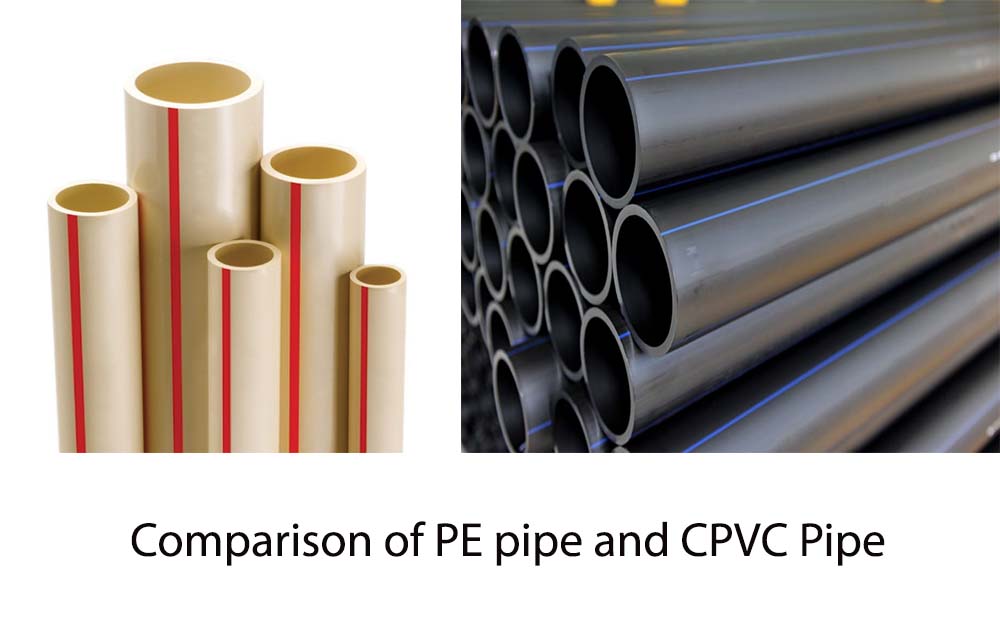Comparison of PE pipe and CPVC Pipe

PE pipe and CPVC pipe are two different types of pipes that can be compared based on various factors:
Price:
PE pipes are generally less expensive than CPVC pipes, especially for large diameter applications. However, the exact cost depends on the specific size, thickness, and other factors.
Durability:
Both PE and CPVC pipes are durable, but they have different strengths. PE pipes are highly resistant to corrosion, abrasion, and chemicals, making them ideal for harsh environments. They also have a long service life and require minimal maintenance. CPVC pipes are heat-resistant and have a high pressure rating, making them suitable for high-temperature applications. However, they may become brittle over time, which can lead to cracks and leaks.
Installation:
Both PE and CPVC pipes are lightweight and easy to install, but they require different installation methods. PE pipes are typically joined using heat fusion, which creates a strong and leak-free joint. CPVC pipes are joined using solvent cement, which can be messy and requires adequate ventilation.
Performance:
Both PE and CPVC pipes have different performance characteristics. PE pipes have a high resistance to impact and stress cracking, making them suitable for applications with high pressure and temperature variations. CPVC pipes are heat-resistant and have a high pressure rating, making them suitable for high-temperature applications.
Environmental Impact:
PE pipes are considered more environmentally friendly compared to CPVC pipes. PE pipes can be recycled and are made from non-toxic materials, while CPVC pipes can release harmful chemicals during manufacturing and disposal.
Chemical Resistance:
PE pipes have a high resistance to chemicals, including acids, alkalis, and organic solvents. CPVC pipes are resistant to most acids, bases, and salts, but may be affected by some organic solvents.
In summary, both PE and CPVC pipes have different strengths and weaknesses based on their specific application requirements. PE pipes are more cost-effective, have a longer service life, and are more environmentally friendly. CPVC pipes have higher heat resistance and pressure rating, but may become brittle over time. When choosing between PE and CPVC pipes, it is important to consider the specific needs of the application, such as pressure rating, temperature, and chemical resistance.
Read More: